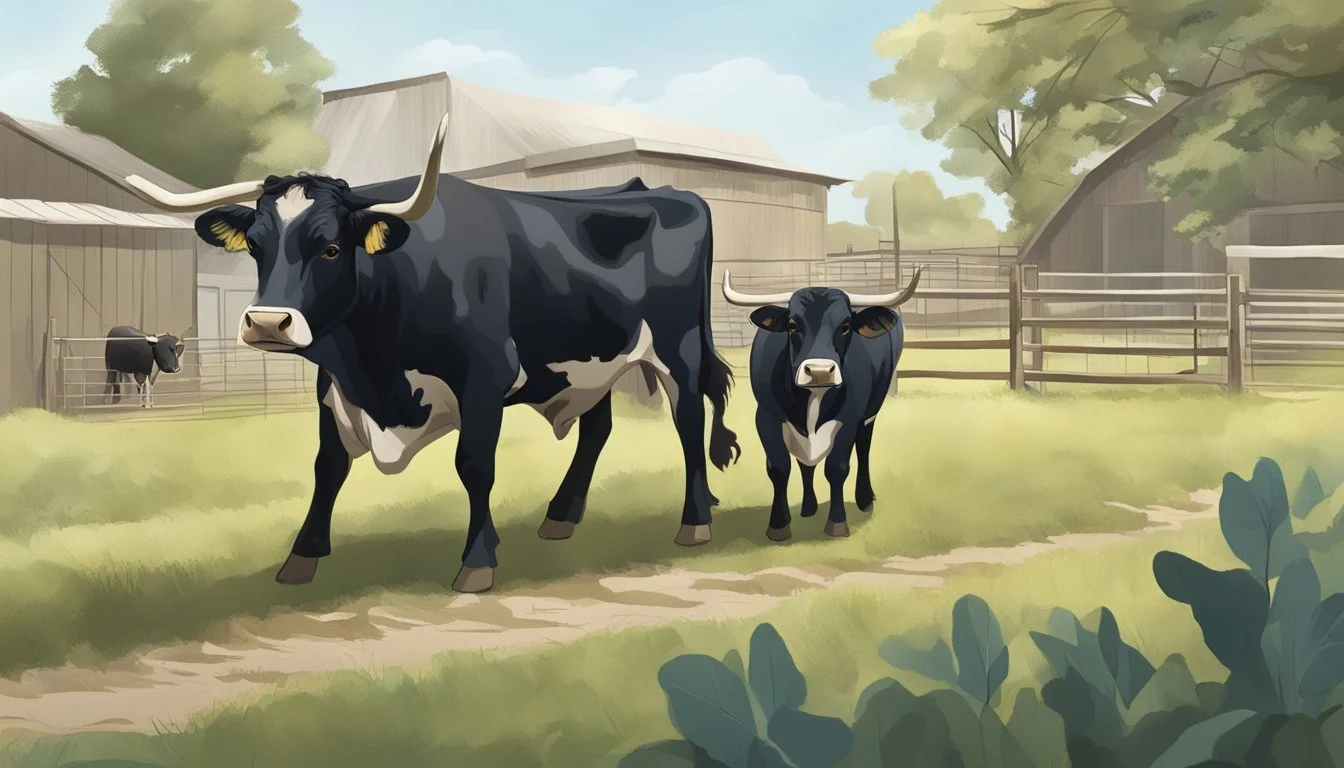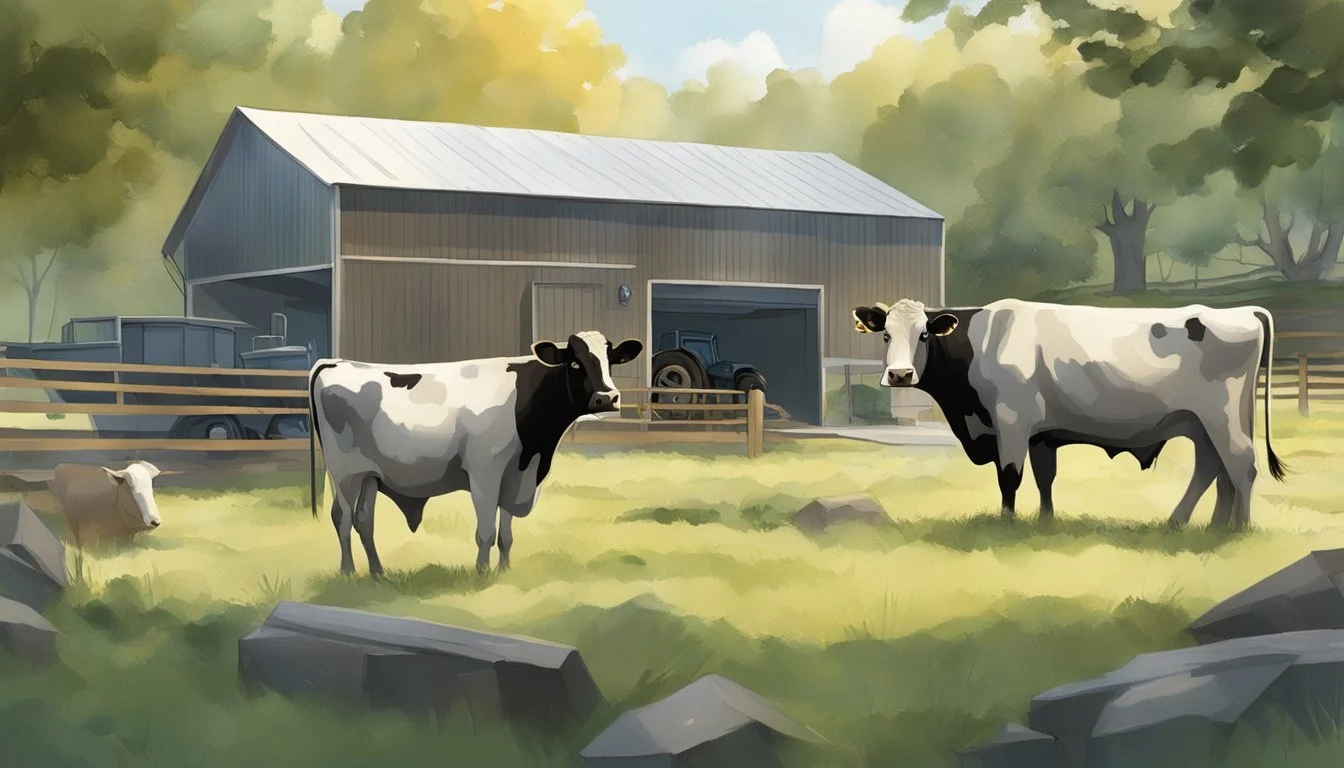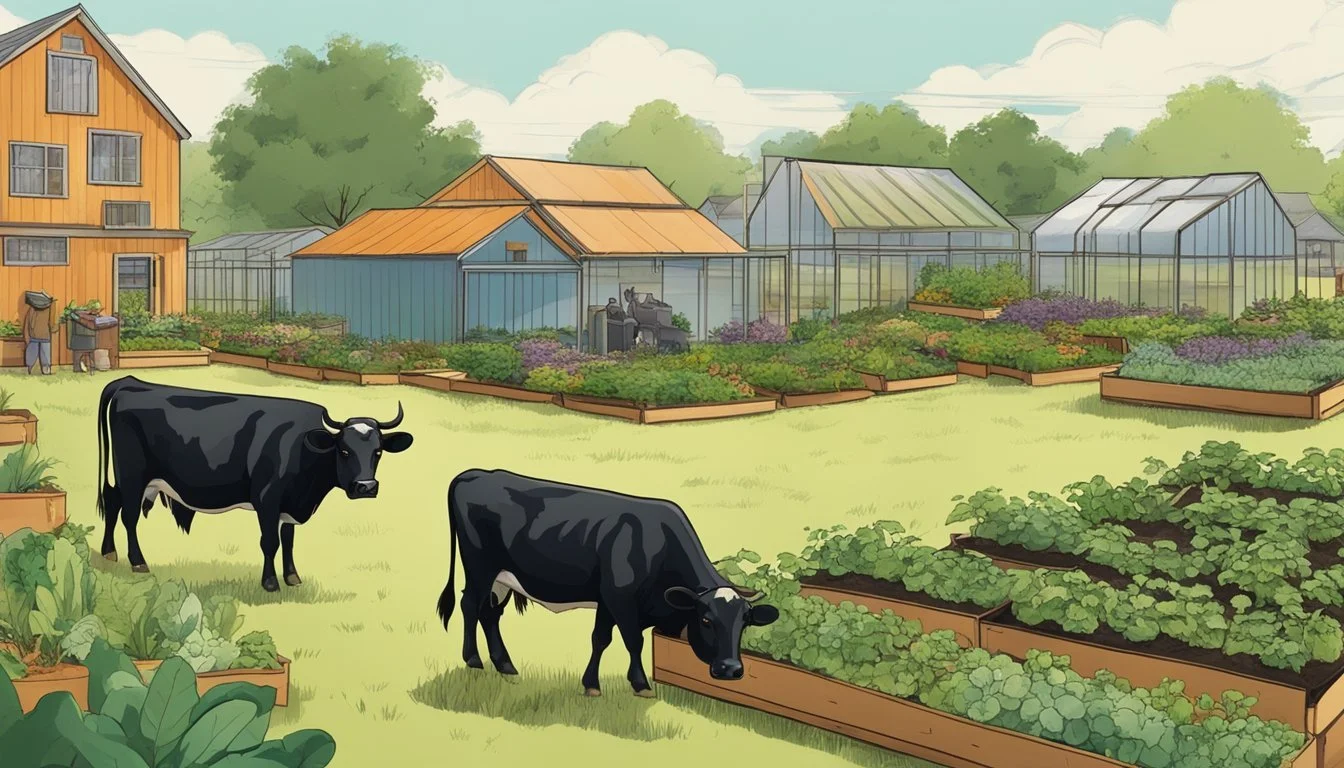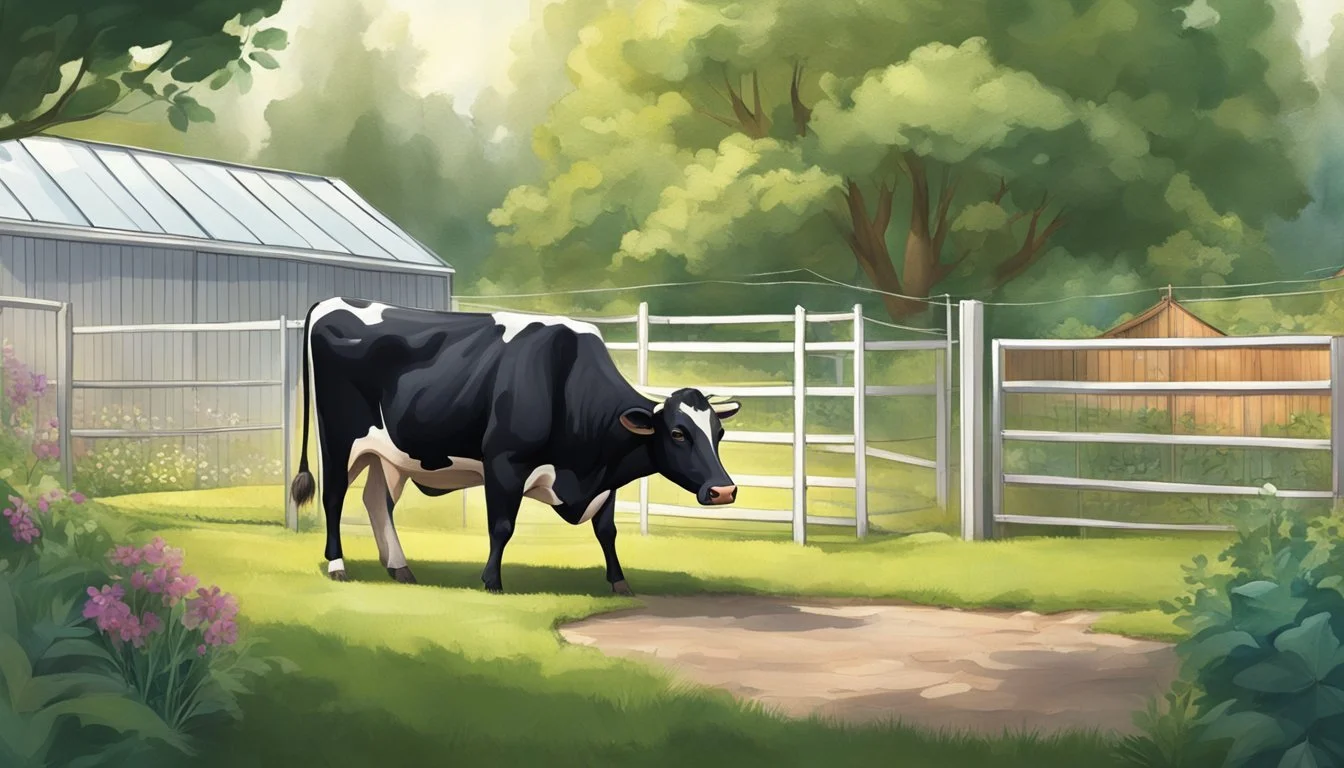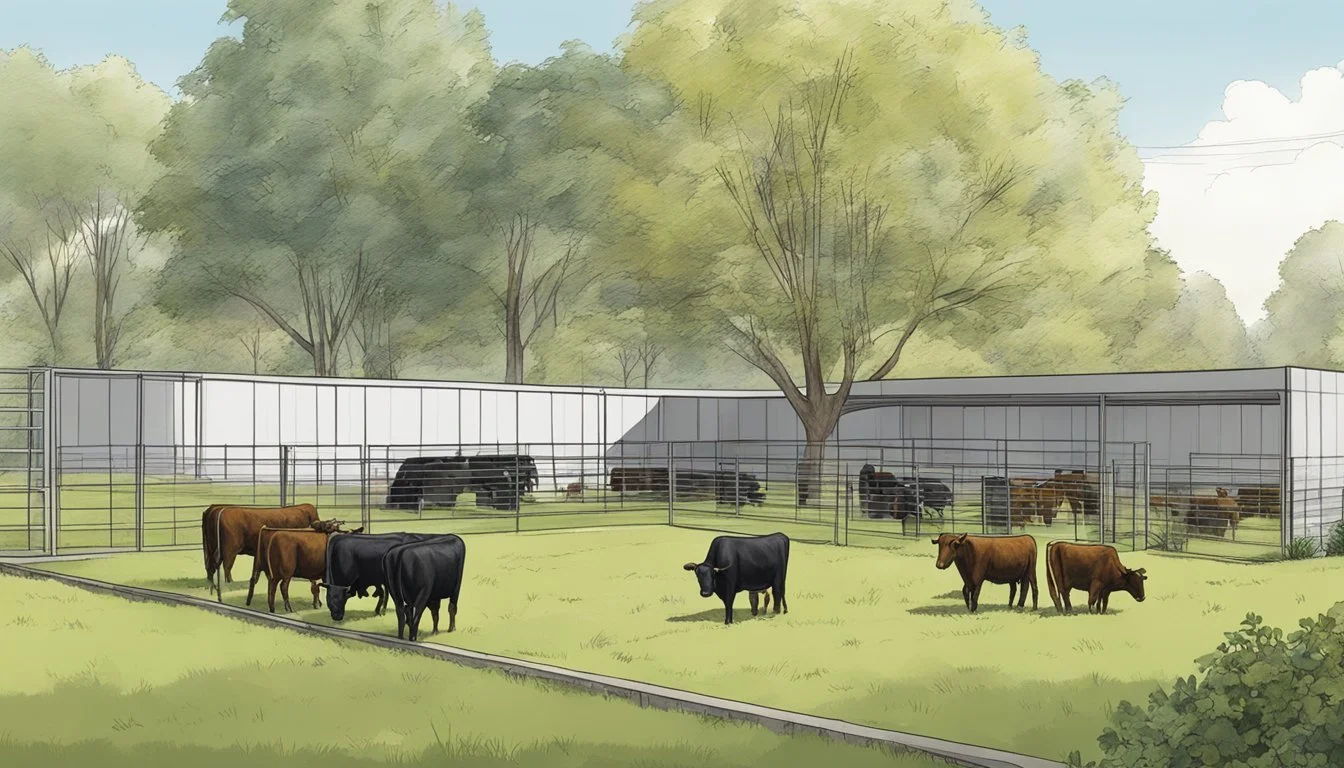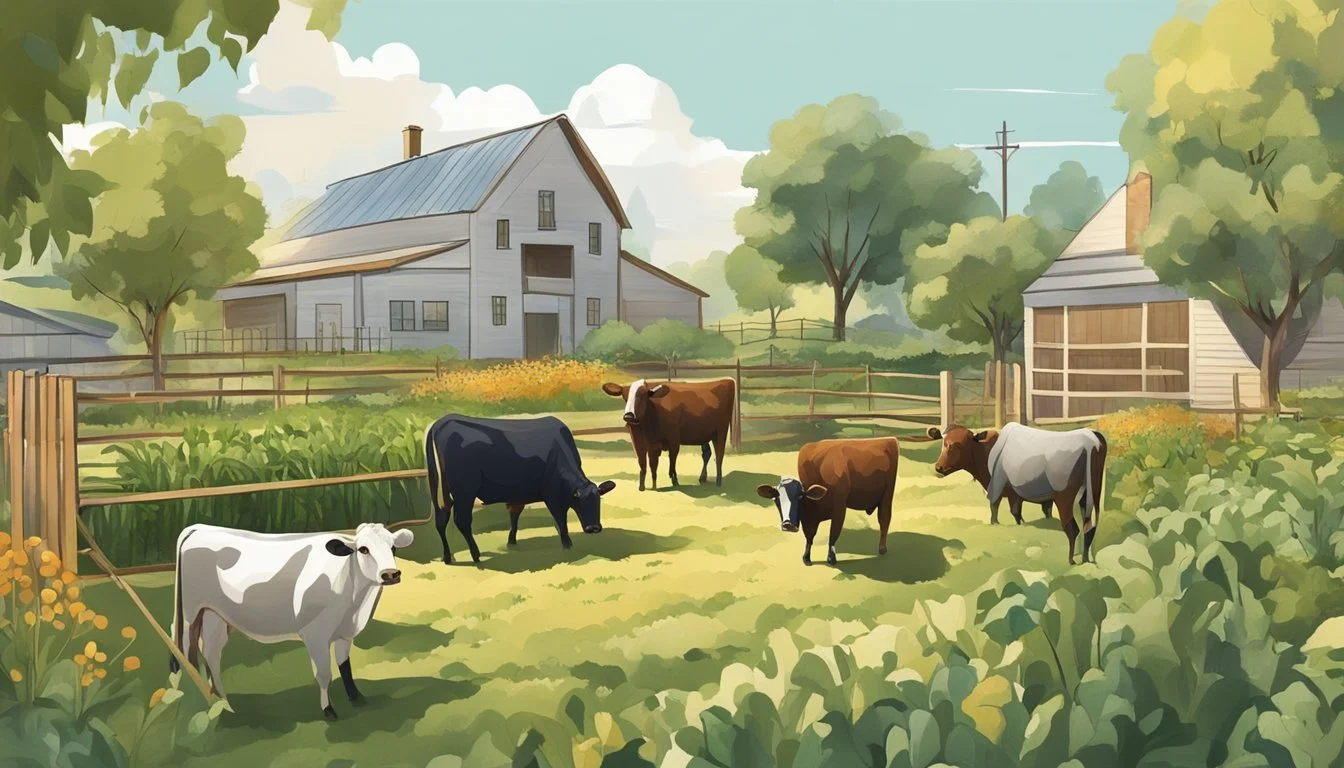Dexter Cattle in Urban Farming
Maximizing Small-Scale Agricultural Productivity
Dexter cattle are an increasingly popular choice for urban farming due to their adaptable nature and small stature. Originally from Ireland, these cattle have a compact build, with cows standing between 36 and 44 inches tall and weighing up to 750 pounds. Their size is particularly suitable for smaller spaces, which makes them ideal for city dwellers looking to incorporate livestock into their farming endeavors. Dexter cattle are not only manageable in terms of space but also have efficient feed conversion rates, making them cost-effective for the urban farmer.
The breed's hardiness and versatility allow them to thrive in various climates, and they are well-suited for pasture-based diets or grain supplementation. This versatility is essential in urban settings where farming conditions can vary greatly. Dexter cattle's ability to prosper on less acreage without compromising on productivity is what endears them to those practicing urban agriculture. With a friendly disposition and a willingness to adapt, they serve as an excellent starting point for urban farmers aiming to delve into animal husbandry.
As urban populations grow, and the interest in sustainable living and local food sources increases, Dexter cattle serve as a viable solution to farming in limited spaces. Their smaller footprint does not diminish their ability to produce; these cattle can provide milk, meat, and even assist with land management. Urban farmers are finding that Dexter cattle are not only a practical addition to their small-scale operations but also a rewarding one, offering a connection to traditional farming practices in a modern setting.
Origins and History
The Dexter cattle breed, originated in the rugged terrain of Ireland, carries a rich legacy marked by adaptability and compact size. This section delves into the journey of Dexter cattle from their Irish roots to their global dissemination, including the efforts to preserve their lineage and establish dedicated societies.
From Ireland to the World
Dexter cattle are native to Ireland, possibly descending from the small Celtic cattle of ancient times. Their name derives from a Mr. Dexter, an agent of Lord Hawarden, who is credited with having a significant role in selecting and breeding these cattle in the early 19th century. Originally from the southern part of Ireland, particularly from the mountainous regions west of the country, Dexters are known for their hardiness and adaptability, thriving in various climates outside their native land.
Throughout history, this versatility led to the spread of Dexter cattle around the world, with records showing that the breed was introduced to the English market in the 1880s. From there, it didn't take long for their practicality and size to garner interest from other countries, leading to further expansion across the globe.
Preservation and Dexter Cattle Societies
To safeguard the unique characteristics and purity of the breed, enthusiasts and breeders have formed associations dedicated to Dexter cattle. One of the earliest societies, the Dexter Cattle Society, was established in 1892 in England. This organization played a pivotal role in maintaining the breed standard and ensuring that the Dexter's attributes were not lost through crossbreeding.
In the following years, Dexter cattle captivated the interest of the United States. In the early 20th century, breeders and fans established dedicated herds to preserve the breed's lineage. The American Dexter Cattle Association, founded to support breeders and promote the Dexter cattle in the United States, is testament to the enduring dedication to sustain this breed. It has established standards and guidelines for breeding, thereby contributing to the Dexter's conservation and popularity in modern farming circles.
Characteristics of Dexter Cattle
Dexter cattle are a breed known for their compact size and versatile utility in both milk and meat production. Originating from Ireland and adapted for smaller farming spaces, these cattle bring robust characteristics to urban farming.
Physical Traits and Colors
Dexter cattle display distinct physical traits that make them well-suited for smaller-scale operations. Adults stand between 36-44 inches at the shoulder and weigh up to 750 pounds, a stature smaller than that of many other beef breeds. The breed conforms to certain standards, showcasing a broad chest, well-rounded hindquarters, and either short or long legs.
In terms of color, Dexters primarily exhibit three solid colors:
Black: The most common color, presenting a deep, rich shade
Red: A vibrant hue ranging from a light red to a deep, rusty shade
Dun: A pale brown or grayish-brown color
While predominantly solid in coloration, Dexters may possess some white markings. However, these are typically minimal and do not dominate their appearance. Both cows and bulls can have horns that are short and moderately thick, protruding laterally, although polled (hornless) Dexters are also common due to selective breeding.
Behavior and Temperament
Dexters are known for their docile temperament, making them a manageable addition to urban farms. They are often described as friendly and are amenable to handling, which is ideal for smaller operations with limited space. Their behavior reflects their adaptability and ease around humans.
Their amiable nature, coupled with their modest size, renders Dexter cattle an intelligent choice for farmers who prioritize ease of management and temperament. Breed standards emphasize the importance of a calm disposition in Dexters, aligning with these expectations for a placid breed that integrates well into diverse farming environments.
Adaptability to Varied Climates
Dexter cattle exhibit remarkable resilience across diverse weather conditions. This adaptability makes them suitable for urban farming even in regions with challenging climates.
Coping with Extreme Weather
Dexter cattle's hardiness allows them to withstand extreme weather, making them well-suited for urban farming endeavors where space and shelter may be limited. In winter, their thick coats provide insulation, while in hotter climates, their smaller size prevents overheating, compared to larger breeds.
Efficient Grazing Habits
Dexter cattle's efficient grazing habits contribute to their adaptability. They can thrive on a variety of forages found in urban settings. Their ability to maintain condition on less pasture is beneficial in various climates, making the most of available grazing resources without overburdening limited urban spaces.
Reproduction and Breeding
Dexter cattle are renowned for their ease of calving and exceptional mothering abilities. They also present a unique challenge in maintaining genetic diversity due to their smaller population as a breed. This section breaks down these two critical aspects of Dexter cattle reproduction and breeding.
Calving Ease and Mothering
Dexter cattle typically have a reputation for calving ease, which makes them suitable for urban farming scenarios where extensive veterinary resources might not be readily available. Heifers usually give birth without assistance, thanks to the breed's smaller stature.
Calving Ease: Typically involves little to no complications, due to the breed’s size.
Mothering: Dexter cows often exhibit strong maternal instincts, ensuring a high rate of calf survival.
Maintaining Genetic Diversity
Maintaining genetic diversity within breeding stock is crucial to prevent inbreeding and associated health problems. Dexter cattle breeders should pay close attention to the cattle's genetics when planning mating strategies to ensure a diverse gene pool.
Selection: Careful selection of breeding stock is essential, considering both phenotype and genotype.
Breeding Strategies: Utilizing varied bloodlines can help maintain genetic diversity.
It is important for breeders to consider the long-term health of the breed by ensuring diversity while selecting for favorable traits.
Dual-Purpose Utility
Dexter cattle thrive in urban farming due to their dual-purpose utility, efficiently providing both quality meat and rich milk. This small yet versatile breed contributes significantly to sustainable practices in confined spaces, making them a valuable asset for urban farmers focusing on both beef and dairy production.
Meat Production and Quality
Meat Production: Dexter cattle are known for their ability to produce high-quality beef with excellent flavor and tenderness, despite their smaller size. They reach marketable weights quicker than larger breeds, offering urban farmers a fast return on investment.
Marbling: Moderately present, contributing to the beef's flavor.
Tenderness: Dexter beef is naturally tender, which is a sought-after quality.
Flavor: The meat is known for its distinctive, rich taste that is well-regarded by beef connoisseurs.
Quality: The beef from Dexter cattle is known for its:
Quality Aspect: Marbling
Description: Balanced, enhances the beef's succulence.
Quality Aspect: Tenderness
Description: Comparable to more traditional beef breeds.
Quality Aspect: Flavor
Description: Rich and full-bodied, owing to grass feeding and breed characteristics.
Milk Production and Characteristics
Milk Production: Dexter cows produce a more modest quantity of milk compared to larger dairy breeds; however, they are praised for the milk's high butterfat content. This is ideal for urban settings where output space might be limited but the demand for quality dairy is high.
Butterfat Content: Typically ranges between 4% to 5%, which is higher than many commercial dairy breeds.
Dairy Products: The high butterfat lends itself well to making cheese, yogurt, and butter.
Characteristics: The milk from Dexter cattle is distinct with:
Milk Aspect: Butterfat Content
Description: Ideal for rich dairy products, with a creamy consistency.
Milk Aspect: Quality
Description: High nutritional value, often selected for homemade dairy crafts.
Milk Aspect: Flavor
Description: Full-flavored, often with a creamier and richer profile than conventional milk.
With their compact size, Dexter cattle fit comfortably into smaller urban spaces, providing urban farmers with a sustainable source of both high-quality meat and rich, flavorful milk. Their adaptability and efficiency in dual-purpose production make them an excellent choice for integrated urban farming operations.
Urban Farming with Dexter Cattle
Urban farming initiatives often operate with limited space and require livestock that can adapt to smaller land areas. Dexter cattle, known for their compact size and versatility, offer an effective solution for small-scale urban farms and homesteads seeking to include livestock in their operations.
Space Considerations and Shelter
Dexter cattle require less land compared to larger cattle breeds, making them ideal for urban settings where space is at a premium. An adult Dexter typically needs about half an acre for grazing, but this can be supplemented with hay and feed if pasture space is insufficient. Adequate shelter is essential and can vary from a simple three-sided structure to protect them from harsh weather, to more elaborate barn setups, depending on the farmer's resources and the cattle's needs.
Minimum Space Requirement: Approximately half an acre per animal
Shelter: Must offer protection from elements and sufficient ventilation
Advantages for Small Farms and Homesteads
Dexter cattle are well-suited for small farms and homesteads due to their adaptability and versatility. They can be raised for both milk and meat, serving as a dual-purpose breed that maximizes the utility of limited space in urban farming scenarios. Their smaller size also results in lower feed costs and easier handling, making them a cost-effective choice for small landholders.
Dual-Purpose: Meat and milk production
Handling: Easier due to smaller size
Feed Costs: Generally lower compared to larger breeds
Feeding and Nutrition
Dexter cattle, due to their smaller size, are well-suited for urban farming where land availability is often limited. They require a balanced diet that supports their health and productivity.
Grazing on Limited Land
In urban settings, Dexter cattle can thrive on smaller parcels of land, as they are efficient grazers. A well-maintained pasture provides the primary source of nutrition and should ideally encompass one to two acres to sustain a small herd. To optimize the use of limited space, rotational grazing is recommended, which involves dividing the pasture into smaller paddocks and moving the cattle between them to allow grass to recover and maintain its nutritional value.
Implement rotational grazing to prevent overgrazing.
Regularly monitor pasture health and grass length.
Use paddock systems to efficiently manage grazing areas.
Supplementary Feeding and Hay
During months when pasture grass is less available, such as winter, Dexter cattle require supplementary feeding. Hay provides a necessary source of fiber and should be of good quality, whether it's grass hay or a mix of grass with legumes. Additionally, grain supplements can boost the nutrition when necessary, although Dexters being a hardy breed do not typically require large quantities of grain.
Supplementary Feeding Essentials:
Provide high-quality hay to maintain proper digestion and nutrition.
Offer grain in moderation to balance the diet as needed.
Ensure constant access to clean water.
Dexter cattle's feeding and nutrition in an urban farming context rely on effective land use for grazing and strategic supplementary feeding. With careful management, these adaptable animals can maintain good health and productivity even in smaller spaces.
Health and Maintenance
Dexter cattle require diligent health and maintenance routines to thrive, especially in urban farming environments where space may be limited. Careful handling and awareness of common health challenges are crucial for their well-being.
Routine Care and Handling
Dexter cattle's smaller stature makes them easier to handle than larger breeds, but they still necessitate regular care practices. Daily check-ups should be conducted to monitor their health and ensure they are not showing signs of stress or injury. Their hooves require trimming every 2-3 months to prevent overgrowth and associated problems. It is important to maintain a schedule for vaccinations and deworming, based on veterinary guidance.
Feeding requires consideration of available space and pasture quality. In small urban farms, a balance of forage and grain supplementation may be necessary. Clean, fresh water should be accessible at all times.
Common Health Challenges
Despite their hardiness, Dexter cattle are susceptible to certain health issues. They can face parasitic infections, particularly in crowded conditions. Regular fecal tests help in the early identification and treatment of such infestations. Another challenge is the potential for respiratory problems due to dust or improper ventilation, hence maintaining good air quality is essential.
Mastitis can occur, particularly in milking cows, if proper hygiene is not practiced during milking. To mitigate this, dairy equipment should be sterilized, and teats should be cleaned before and after milking.
Lastly, urban environments may expose Dexter cattle to unique stressors such as noise pollution. Implementing stress-reducing practices, like providing a quiet, comfortable resting area, is beneficial for their overall health.
Economic Considerations
Incorporating Dexter cattle into urban farming presents both economic challenges and opportunities. The section below outlines how farmers can market Dexter cattle products effectively and provides an analysis of the costs versus benefits influencing the urban agriculture economy.
Marketing Dexter Cattle Products
Farmers have a unique position when marketing Dexter cattle products due to the breed's smaller size and subsequent lower yield compared to larger cattle breeds. Dexter meat is often marketed as a premium, niche product, which can command higher prices in the market. Additionally, products like crafts from their hides or specialized dairy items cater to distinct consumer segments interested in locally sourced, sustainable options.
Strategies for marketing:
Highlight artisanal quality and local sourcing to appeal to eco-conscious consumers
Utilize online platforms and farmers' markets for direct sales
Promote Dexter cattle’s dual-purpose (meat and dairy) to diversify income streams
Costs vs Benefits Analysis
An objective costs vs benefits analysis is critical for urban farmers considering the adoption of Dexter cattle. The main benefit lies in their adaptability to smaller spaces and less feed consumption, making them well-suited for urban settings where space is at a premium. However, initial costs can be significant, and the lower volume of produce may not cater to high consumer demand.
Costs:
Startup costs: purchasing cattle, setting up urban farm space
Ongoing costs: feed, veterinary care, labor
Benefits:
Lower maintenance costs due to the breed’s hardiness and feed efficiency
Potential for higher premiums from specialty markets
Pros:
Space efficiency in urban settings can reduce rental costs
Contribution to the local economy through small-scale, sustainable urban farming
Cons:
Economic viability may be challenging due to market size limitations
Balancing costs with lower output requires careful management and niche marketing strategies
This comparative analysis helps urban farmers gauge the economic viability of integrating Dexter cattle into urban agricultural practices.
Cultural Significance and Community
Dexter cattle contribute uniquely to urban agricultural environments by fostering a sense of community and culture. They are celebrated for their charm and the enthusiasm they evoke amongst breed aficionados.
Dexter Cattle in Society and Media
Dexter cattle, the smallest European breed, have found a special place in society and media by showcasing their capability to thrive in smaller, non-traditional farming spaces within urban settings. Often featured in local news and social media, they draw attention to innovative urban farming practices and sustainable living approaches. Their diminutive stature and hardy nature have rendered them symbols of adaptability in an ever-developing urban landscape.
Breed Enthusiasts and Associations
Breed Enthusiasts: Dexter cattle enthusiasts form a vibrant community that actively promotes the benefits and joys of raising this breed in urban areas. They share experiences and knowledge about the idiosyncrasies of the breed, emphasizing their dual-purpose utility for both milk and meat.
Dexter Cattle Societies: A number of societies dedicated to Dexter cattle exist, aiming to preserve and improve the breed. These societies often serve as a hub for community events, and provide resources for urban farmers:
Membership Numbers: These societies tout impressive membership numbers, illustrating the growing community interest.
Resource Availability: They provide a wealth of resources such as care guides, breeding tips, and event information.
Dexter cattle breed associations also operate as informative platforms for both seasoned and aspiring farmers, fostering a communal atmosphere around this cherished breed.





